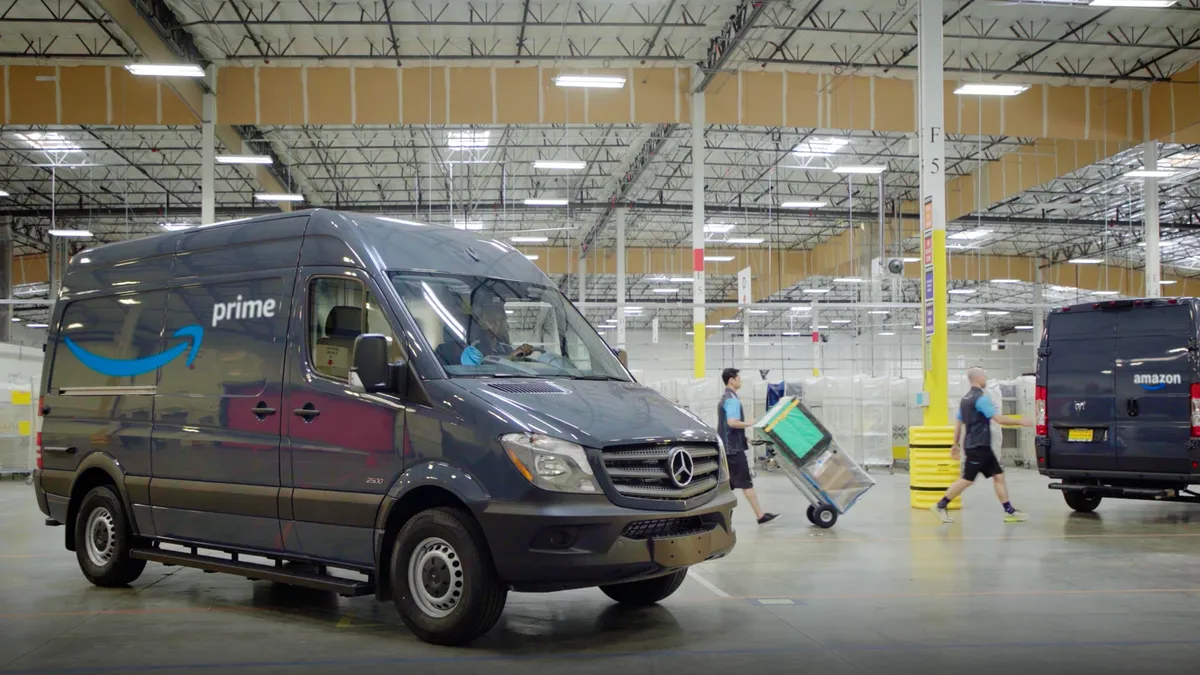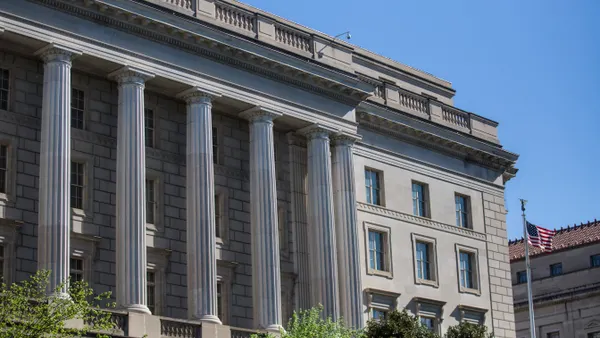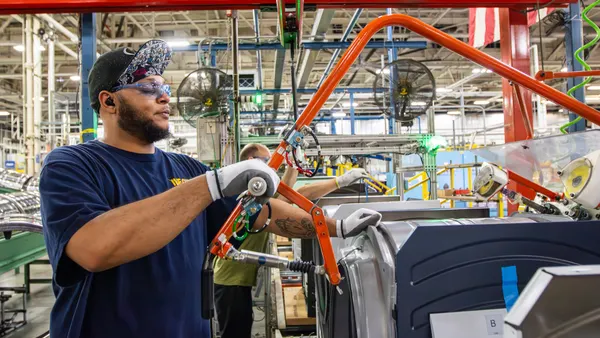Dive Brief:
- Amazon's shipping costs increased 46% year-over-year on the back of a 24% net sales increase, the company announced Thursday. Profits fell 26% year-over-year in Q3.
- CFO Brian Olsavsky attributed the increased costs to continued capacity building related to the shift of default Amazon Prime shipping from two days to one. The increased expense, though it exceeded the company's $800 million expectation in Q2, was closer in line with expectations in Q3. Transportation makes up the largest portion of that cost, said the CFO, and other expenses include inventory staging and extra warehouse shifts to extend order cutoff times.
- "It’s going to be the route density and other things will improve over time and get our cost structure down, but for now, there is certainly some start-up paying in adding new capacity," said Olsavsky, calling the switch a "drastic change to the whole network topology."
Dive Insight:
Though Amazon initially downplayed the effort it would take to shift Prime orders from two-day shipping to one, executives remain confident the move was the right one.
"It’s a big investment, and it’s the right long-term decision for customers. And although it’s counterintuitive, the fastest delivery speeds generate the least carbon emissions because these products ship from fulfillment centers very close to the customer — it simply becomes impractical to use air or long ground routes," CEO Jeff Bezos said in a statement announcing third-quarter earnings.
Analysts on the accompanying conference call wondered if Amazon's growing share of last-mile deliveries through its logistics arm, Amazon Logistics, would help or hurt the bottom line.
Amazon now handles delivery for more than 40% of orders placed through its site, all the way to the customer's door, according to data from Rakuten. On the call, Olsavsky echoed Amazon's previous statements that other carriers will always be part of the company's delivery mix — though he added that in some places, like the U.K., finding partners to deliver as quickly as Amazon requires can be difficult and necessitates a very high percentage of Amazon Logistics deliveries.
Amazon's growing logistics capacity has long stoked suspicions that the e-tailer would become a 3PL itself. Supply Chain Dive reported that Amazon pitched such services to shippers in a handful of cities earlier this year.
When asked to confirm the report, an Amazon spokesperson told Supply Chain Dive: "We’re always working to develop new, innovative ways to support small and medium businesses including shipping programs that help these businesses get packages to their customers quickly and reliably.”
Thursday, Colin Sebastian of Robert W. Baird & Co. asked Olsavsky if delivering non-Amazon packages is seen as an opportunity for the company "down the road."
Olsavsky's answer skirted the question, stating that no matter the delivery partner, Amazon's focus was on ensuring enough capacity for its own orders.













